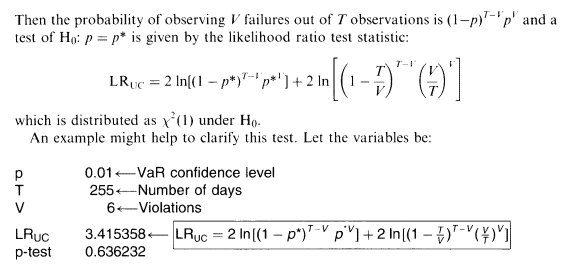

$\frac{\text { Expected no. of departures from state } j}{\text { Unit time }}=\frac{\text { Expected no. of entrances into state } j}{\text { Unit time }}$
Using the variables above, we might see that:
$\frac{\text { Expected no. of departures from state } j}{\text { Unit time }}=\pi_{i}\left(\lambda_{j}+\mu_{j}\right)$
Since for $j \geqslant 1$ state $j$ can only be entered from state $j-1$ or $j+1$ :
$\frac{\text { Expected no. of entrances into state } j}{\text { Unit time }}=\pi_{i-1} \lambda_{j-1}+\pi_{i+1} \mu_{j+1}$
Solving the set of equations above we get:
$$
\pi_{j-1} \lambda_{j-1}+\pi_{i+1} \mu_{i+1}=\pi_{j}\left(\lambda_{i}+\mu_{j}\right)
$$
For $j=0, \mu_{0}=\pi_{-1}=0$, therefore we have:
$$
\pi_{1} \mu_{1}=\pi_{0} \lambda_{0}
$$
$$
\begin{aligned}
&\pi_{0}=\frac{1}{1+\sum_{1}^{\infty} c_{j}} \
&\pi_{1}=\frac{\pi_{0} \lambda_{0}}{\mu_{1}} \
&\pi_{2}=\frac{\pi_{0}\left(\lambda_{0} \lambda_{1}\right)}{\mu_{1} \mu_{2}}
\end{aligned}
$$
We could define a ratio $c$ as:
$$
c_{j}=\frac{\lambda_{0} \lambda_{1} \ldots \lambda_{j-1}}{\mu_{1} \mu_{2} \ldots \mu_{j}}
$$
Or, put another way:
$$
\pi_{j}=\pi_{0} c_{j} \quad \text { i.e. } \quad c_{1}=\frac{\lambda_{0}}{\mu_{1}}
$$

STAT0020 COURSE NOTES :
One day a system vendor arrives in your office and offers a switch that works with $99 \%$ reliability and another one that offers a backup system with working time of 100 hours instead of 50 . How would this affect the calculation?
In the first case (buying the more reliable switch), $p=99 \%$ :
$$
P_{t}=0.99\left[1-\exp \left(-\frac{3}{50}\right)\right]+0.01=0.0676
$$
In the second case (buying the new backup system), $t=100$ :
$$
P_{l}=0.90\left[1-\exp \left(-\frac{3}{100}\right)\right]+0.01=0.0765
$$
If both are bought:
$$
P_{t}=0.99\left[1-\exp \left(-\frac{3}{100}\right)\right]+0.01=0.03925
$$